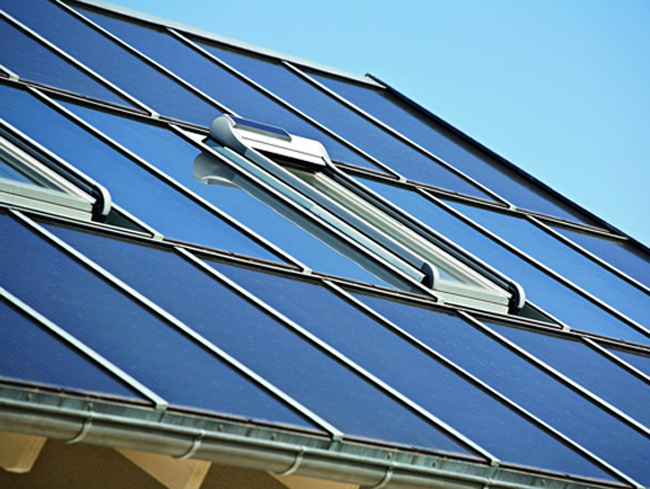
What do California dairy farms have in abundance? Cows? Check. Land? Check. Manure? Check, check.
Sunlight? Yeah, that, too. UNC undergraduate Ann Soltan (environmental studies, American studies ’13) wants to put that solar energy to work while saving farmers a bit of cash.
During the summer of 2012, Soltan was interning for the EPA in San Francisco when she learned that converting cow manure into methane for energy production on dairy farms isn’t the no-brainer many people had thought it would be.
“The technology is cumbersome,” Soltan says, “and farmers have to give up some land for these huge digesters.” Most importantly, the financial return isn’t so good for farmers, many of whom operate on tight budgets. Many have soured on the idea.
Soltan wondered whether the EPA had considered other renewable forms of energy for farms. It hadn’t. But her EPA colleague Cara Peck told Soltan that solar might be worth a look. Later that day, Soltan grabbed a notepad and scribbled down two questions: “What are milking-barn roofs made of? Can the roofs of dairy-farm barns sustain the weight of solar panels?”
Soltan phoned StructuresPlus, one of the main firms that builds dairy-farm barns in California. Turns out, the roofs are built with corrugated steel, which is strong enough to hold solar panels. And she found that attaching solar panels would be easy.
That was enough for her. She tracked down her boss and got the go-ahead to research the potential of ramping up solar power on the more than 1,600 dairy farms in California—the leading dairy producer in the United States.

A rising senior in the summer of 2012, Soltan has been around farms her entire life, including the past three years working at Coon Rock Farm in Hillsborough. Her focus had always been sustainable agriculture; solar could fit in nicely. She knew the specifics of photovoltaic design but not the California-specific and industry-specific information the EPA would need. So she phoned fellow UNC student Akhil Jariwala, who was interning at Sungevity, a solar development company across the bay in Oakland.
“I figured together we’d be able to do really quick calculations,” Soltan says. “He had all the solar data and I had all the ag information from my EPA work.”
She phoned the Western United Dairymen, a lobbying group in California, which told her that all milking barns are built to the same specs. For instance, each head gate where cows stand while being milked is one foot wide. Because Soltan knew how many cows each farm had, she could calculate the length of the milking barns.
She phoned Western United Dairymen and another lobbying group, Dairy Cares, to learn more about the pitch of barn roofs. Turns out the roofs are sloped shallow enough to hold panels and take in the sun’s rays. Soltan also found out the standard width of the barns, and that allowed her to extrapolate the total area of the roofs. Then she pulled addresses for 100 farms from her database and pinpointed which barn roofs faced south. She figured out that about 50 percent of California dairy farms have milking barns that could be fitted with solar panels. She also found that many farms have structures other than milking barns that could support the panels.
This is when Soltan realized she might be getting ahead of herself; maybe there were dairy farms with solar arrays. She found two. One of them was Curtimade Dairy, where farmer Katrina Rainey uses a huge ground-mounted solar array to produce most of the energy for the farm while saving the Curti family $145,000 in annual energy costs.
Rainey, though, wouldn’t have been able to afford the investment—some $2.9 million—without federal grants and state incentive programs.
When Soltan learned of Curtimade’s solar array, she phoned Rainey and the two began working together so the EPA could use Curtimade as an example of what’s possible. Though a lot of farms don’t have the land for the sort of ground-mounted array Curtimade built, Soltan knew Rainey’s experience would help sell the idea of solar to other farmers as well as the EPA.
Back at the EPA, Soltan crunched the numbers and found that if 50 percent of California’s dairy farms installed solar panels, they could generate 790 million kilowatt-hours per year—more than 75 percent of the energy that California dairy farms currently use—and save farmers $97.2 million.
Those savings will likely increase in the years to come. “The price of solar is being driven down like crazy in California,” Soltan says. “It’s been cut in half in the past year alone. The dairy industry possesses a tremendous buying power that could fundamentally change the economics of solar for dairy farmers.”
Aside from cost savings, ramping up solar power on California’s farms would save water—arguably the most precious resource in the state—because nuclear and fossil-fuel power plants use immense amounts of it.
And, of course, solar would reduce greenhouse emissions. Soltan calculated that solar panels on 50 percent of California’s dairy barn roofs would save more than a half-million metric tons of carbon dioxide from spewing into the atmosphere every year. That represents just 1.6 percent of the CO2 emissions from a single coal-fired power plant. Such reductions are crucial in California’s Central Valley, which has several fossil fuel-based power plants and notoriously poor air quality.
Meanwhile, as the technology to convert manure into methane improves, farms could implement digesters and solar panels. Farmers, theoretically, would be able to sell energy back onto the grid, Soltan says, assuming the federal and state governments put the necessary policy changes in place.
The EPA is currently operating under a hiring freeze, so there was no chance for the agency to bring Soltan aboard to continue her research. But she finished her honors thesis and handed over reams of research to the EPA’s Cara Peck, who’s now fine-tuning the cost-benefit analyses and forming policy recommendations. Peck, along with dairy lobbying groups and Katrina Rainey, has been presenting the research at conferences and meetings.
There are 65,000 dairy farms in the United States; the reach of Soltan’s research may not end in California’s Central Valley.
“Everyone stands to benefit from solar,” Soltan says. Especially farmers, who see the writing on the wall—higher energy costs—and want a more sustainable solution. “That’s the really cool part,” she says.
Soltan is now eyeing a stint as a congressional aide in Washington, DC, where she hopes to work on issues related to both the environment and agriculture.
For now, she can be found at Coon Rock Farm in Hillsborough taking care of livestock. It’s a small farm. No need for a manure digester. But if they want to pursue solar energy, they’ll know whom to ask.
Ann Soltan, a Morehead-Cain Scholar, graduated this May with bachelor’s degrees in environmental studies and American studies, both from the College of Arts and Sciences. She presented her research at the 14th Annual Celebration of Undergraduate Research, hosted this April by the Office for Undergraduate Research.
[ Story by Mark Derewicz, Endeavors magazine ]


